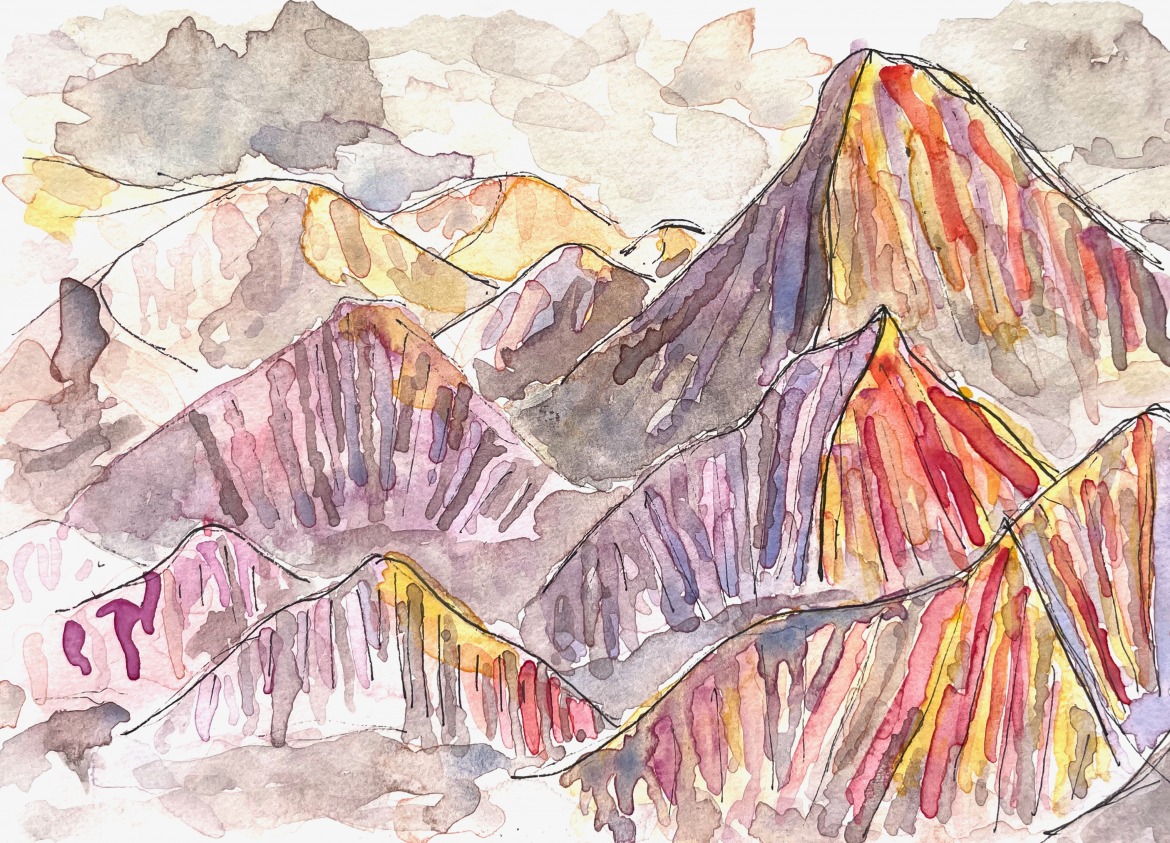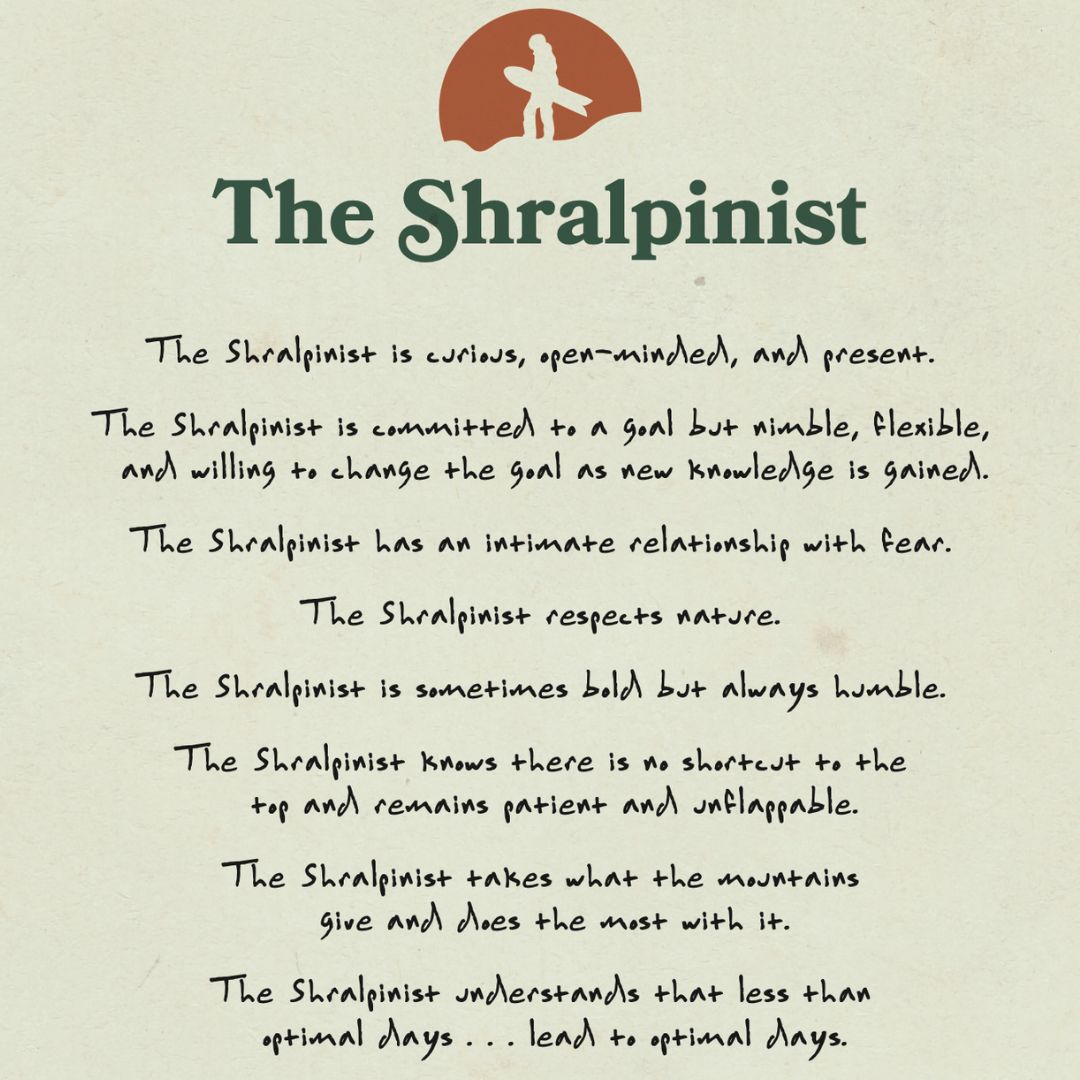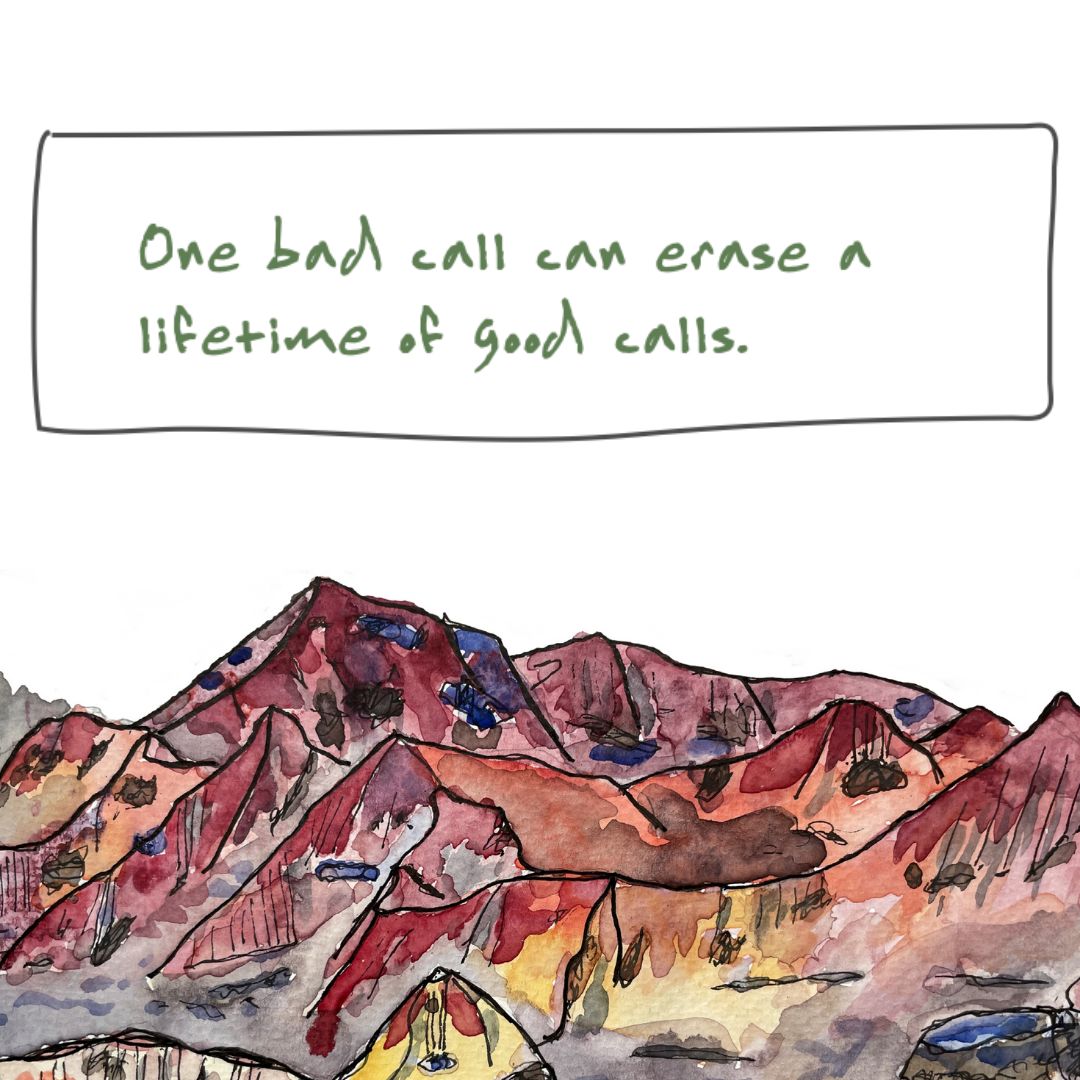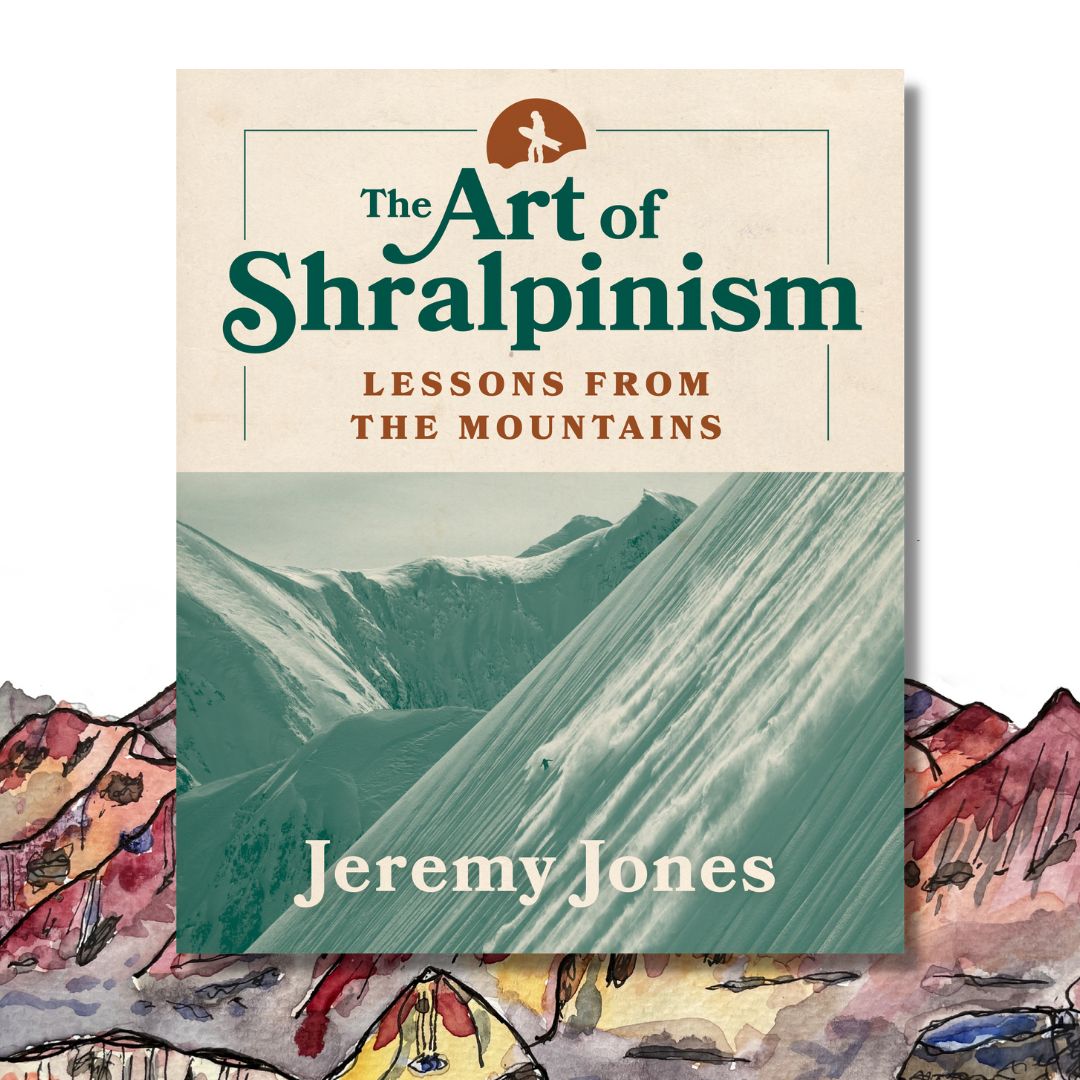
Jeremy Jones’ book, The Art of Shralpinism is part guide, part manual, part memoir, and part meditation.
The gift of a life well lived: Jeremy Jones offers up some life and mountain lessons in his new book, The Art of Shralpinism — Lessons From The Mountains. Along the way, there’s personal artwork and nuggets of wisdom as the pages turn.
This much I know about Jeremy Jones: he seems earnest in a way that dispels my traditional and narrow view of once-upon-a-time iconoclasts. We’ve seen many young chargers, snowboards or skis underfoot, light a flame, fan the flame, and burn out: this is not Jeremy Jones.
Jones has penned a new book with an apt title, The Art of Shralpinism Lessons From The Mountains. Think of this book as part memoir, part how-to best practices in the mountains, and part personal artistic expression. I had assumed, glancing at the title, that the “Art” was of the laying tracks down in powder sort of art. It turns out, Jones likes to express himself through drawing and painting.
For some, Jones may have popped on the radar years ago through his star role in ski/riding films. Or his heli-abstinence, fondness for the human powdered, and his spicy descents. I recall watching some video of his 2014 descent of a Himalayan face and having no idea how to compartmentalize what I had watched. For sure, there was some art, some schralping, and alpinism. And then, in 2020, Jones and director Josh “Bones” Murphy dropped Purple Mountains, a film about having conversations and finding common ground. In these highly divisive times, I believe in asking questions and getting to know individuals rather than their fidelity to a party’s platform, and Jones emulates that. For me, the film was a good dose of positivity and I found myself drawn towards Jones’ gravitational pull — which, considering the niche world of snowboarding and the backcountry, is substantial.
So yes, I was curious to learn more about Jones.
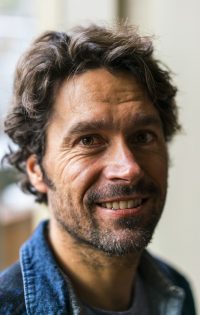
Jeremy Jones, the author of The Art of Shralpinism, has become a driving force in the mountain community. Photo: Ming Poon.
The book bears fruit for the curious reader. In particular, I’m speaking to both skiers and snowboarders. As a skier, I have several partners who splitboard; I don’t know specifically how they see terrain or how they make efficient use of it. I do, by watching them turn and carve, get a sense of how they can see and find playfulness where I cannot. Jones offers several insights for us skiers that help illuminate why a splitboarder might be doing things a certain way. One hundred percent, and Jones will convince you of this, we have something to learn from the splitboard tribe.
The book’s organization, at the macro level, can work for those readers hellbent on reading a book in a single weekend. But that is a qualified “can.” Not so ironically, there’s a certain flow to the topics that keep the pages turning. Pragmatically, the book is broken into three parts: Wisdom, Science, and Art.
For those like myself who can be easily distracted, many pages can be both a curse and a blessing. Let’s dig into chapter 3, “Mistakes, Goals, Mentors, and Partners,” for example. On page 62, we get a segment titled “Bill Briggs: The First to Ski the Grand Teton,” which occupies the page’s upper third. The lower two-thirds are words about finding and recruiting solid mentors. The opposite page, page 63, features a highlighted quote from George Bernard Shaw, and more words on partners/mentors, while the lower half features a Jones watercolor. All this is to say that while there is flow if you stick to Jones’ words, there are plenty of mental and visual off-ramps. You’ll need focus if you are trying to push through and binge-read.
But Jones may have had other readers in mind. While this can be a sit-down and read-it-in-a-single-push book, it’s also a fine book to keep on the bedside table for those five to ten page take-me-to-the-backcountry nuggets some need for sweet dreams.
There’s no denying that Jones has shaped many aspects of modern mountain culture. There’s the eponymous Jones Snowboards, his strong voice as the founder of POW (Protect Our Winters), and his seasonal appearance in a big mountain riding flick near you. What I admire about Jones are his steely nerves and dogged perseverance. He can hang by an edge on a steep spine and make you pucker from afar. He can also calm a scene with his gravelly voice (at least, that’s how I hear it) and serene demeanor as he plans for a spellbinding deep mountain mission.
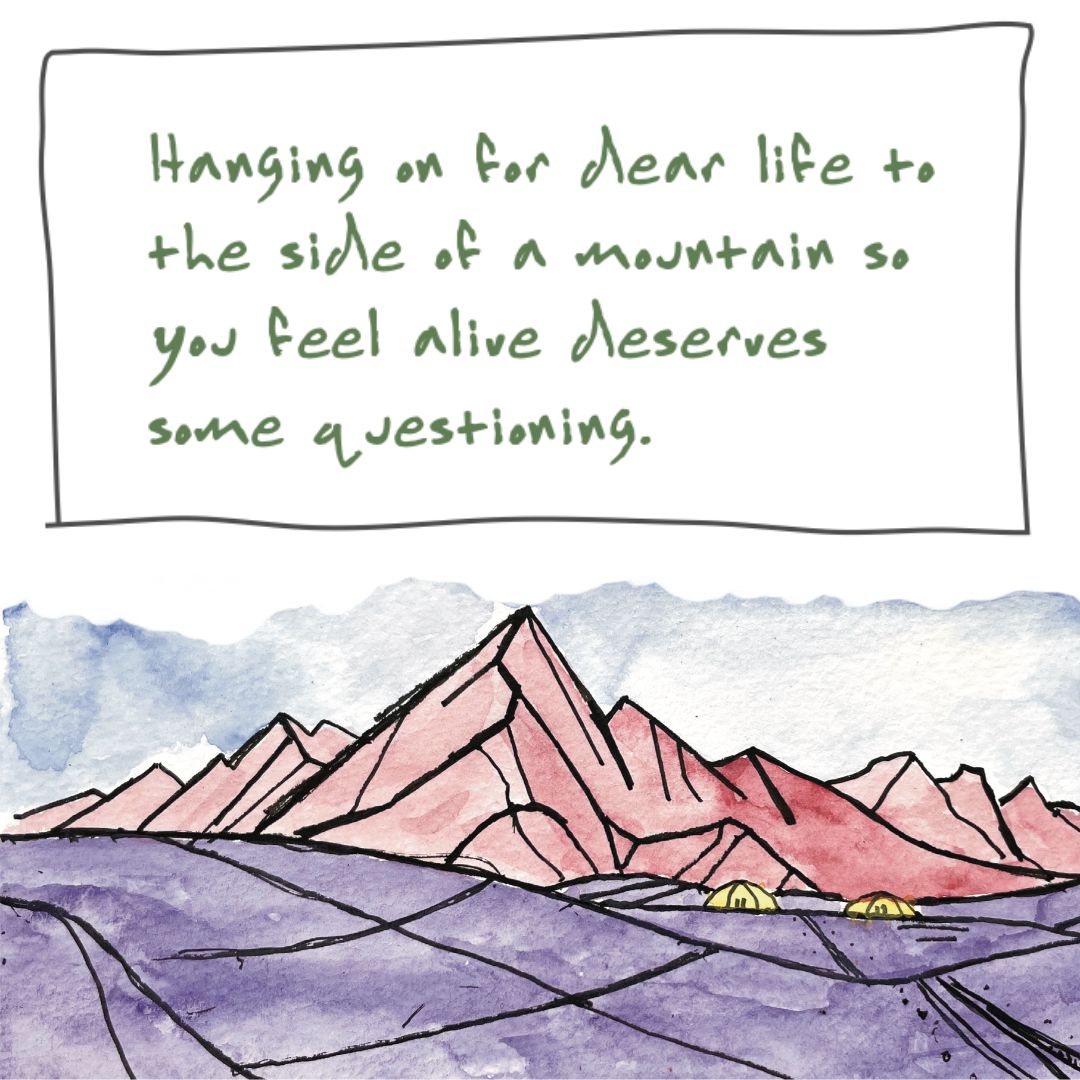
“There are old climbers. There are bold climbers… but, there are no old, bold climbers.” Insert skiers or snowboarders for climbers and the truth remains. Take Jones’ words and lessons put forth in the book, and make them your own; proceed in the mountains with some caution.
The Art of Shralpinism is like a handbook for mountain aspirants; there are many nuggets, some literal, some more mystical. Jones also peppers the book with not infrequent comments and advice from a who’s who of the mountain scene. Keep in mind that although Jones might be a snowboard Jedi Master, the mountains are fickle, and the hazards are many. Luck plays a part, too, when considering the old maxim: “There are old climbers. There are bold climbers… but, there are no old, bold climbers.” Insert skiers or snowboarders for climbers, and the truth remains. Take Jones’ words and lessons put forth in the book, and make them your own; proceed in the mountains with caution. As Jones writes, “Hanging on for dear life to the side of a mountain so you feel alive deserves some questioning.”
Shop for The Art of Shralpinism.
Jason Albert comes to WildSnow from Bend, Oregon. After growing up on the East Coast, he migrated from Montana to Colorado and settled in Oregon. Simple pleasures are quiet and long days touring. His gray hair might stem from his first Grand Traverse in 2000 when rented leather boots and 210cm skis were not the speed weapons he had hoped for. Jason survived the transition from free-heel kool-aid drinker to faster and lighter (think AT), and safer, are better.

